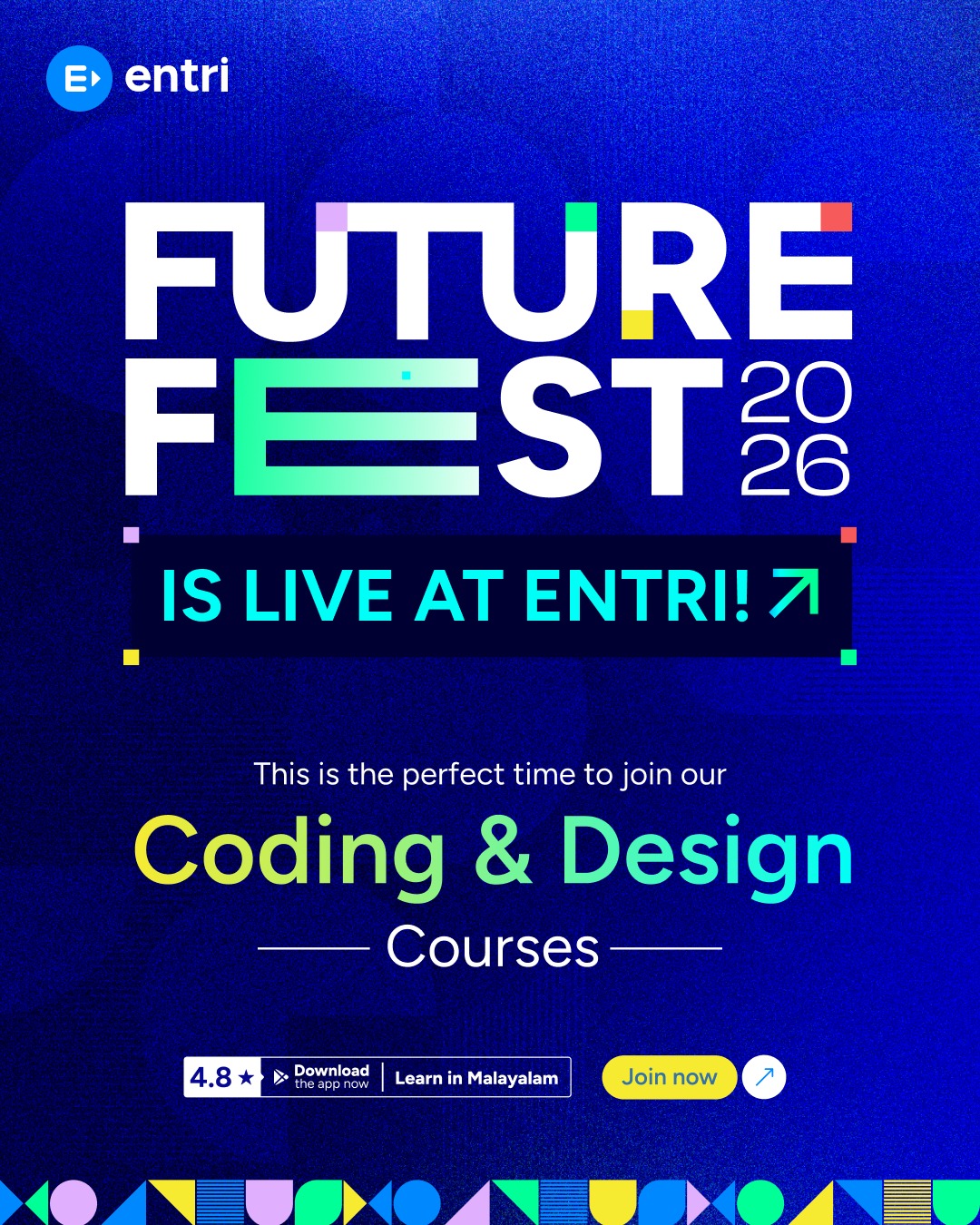Table of Contents
Key Takeaways:
- The best React Native component libraries in 2025 include Tamagui, Native Base (now also called Gluestack UI), UI Kitten, Dripsy, React Native Elements, Shoutem UI, and Lottie.
- Choose a library based on design systems, performance needs, theming, cross-platform features, and community strength for optimal app development.
- Modern libraries now emphasize accessibility, responsive design, and real-time animations, responding to user and business demands.
- Quick comparison tables, practical selection tips, and integration steps are vital for skimmable, efficient decision-making.
- Entri’s AI-powered Full Stack Developer Course offers placement support and up-to-date, project-focused learning to jumpstart a developer career.
Introduction
Take a quick look at any mobile device today—almost every app that captures your attention boasts beautiful design and fluid navigation. For modern developers, it’s not enough to build apps that just work. Apps need to stand out in a crowded market, adapt effortlessly to user needs, and deliver smooth performance on both iOS and Android.
If you’ve ever felt the pressure to ship fast, maintain design consistency, and handle endless changes, you’re not alone. React Native’s component libraries are here to be your secret weapon, letting you avoid “reinventing the wheel” and focus on the logic and features that matter. This guide offers a hands-on walkthrough of the top React Native UI component libraries in 2025—so you can code smarter, not harder.
What Is a React Native Component Library?
1: Which of the following is a JavaScript framework/library?
- React Native component libraries are collections of ready-made UI building blocks—think buttons, cards, forms, tooltips, animated graphics, and more.
- By leveraging these pre-built components, developers:
- Save time and reduce repetitive UI coding.
- Build consistent interfaces across platforms.
- Tap into established design systems (such as Material Design or Eva Design System).
- Many libraries now offer real-time theming, accessibility tweaks, and advanced layout features.
Tip: Start small—even just one robust UI library can greatly improve consistency and reduce bugs in your app’s design.
🚀 Start Coding Today! Enroll Now with Easy EMI Options. 💳✨
Get Hired as a Full-Stack Developer: Master the Skills Employers Are Looking For!
Start Learning With EMI Payment OptionsTop-Ranking React Native UI Libraries in 2025
Explore the strengths, use cases, and popularity stats of the leading component libraries:
Tamagui
- Why use: Offers blazing performance via compile-time optimization and supports large-scale, cross-platform apps with a single theme.
- Key Features:
- Compile-time style and tree-shaking for small bundle sizes.
- Seamless web + native compatibility (Expo, Next.js).
- Supports shared code/design systems.
- Supports animated components.
- Utilizes TypeScript for safety and autocompletion.
- Best for: Teams desiring shared design systems and top-tier performance.
Native Base (Gluestack UI)
- Why use: A mature, open-source library with a huge component set and cross-platform features.dev+2
- Key Features:
- Extensive library of UI building blocks (forms, overlays, navigations).
- Customization with ThemeProvider; utility-based (Tailwind-like).
- Dark/light theme, platform-specific overrides.
- Strong community (20k GitHub stars).
- Real accessibility tools and RTL support.
- Best for: Quick project scaffolding, large-scale applications, and universal theming.
Dripsy
- Why use: Minimal yet powerful, perfect for responsive and type-safe design.
- Key Features:
- Responsive styles with intuitive props and array breakpoints.
- Universal compatibility (React Native, web, Expo, Next.js).
- Light, type-checked theming for branding and scaling.
- Performance optimized with memoized atomic styles.
- Best for: Apps needing sleek, pure-responsive design or using strict TypeScript.
React Native Elements
- Why use: Super accessible for beginners and ideal for rapid prototyping.
- Key Features:
- Huge range: from buttons and icons to overlays and typography.
- Plug-and-play with easy customization.
- Built-in theming and seamless integration with React Native Web.
- Best for: Startups, rapid MVP development, and apps with evolving requirements.
UI Kitten
- Why use: Elegant, premade themes with deep flexibility and strong design system roots.
- Key Features:
- Powered by Eva Design System for design consistency.
- 25+ components, Eva Icons (480+ out of the box).
- Switch themes (light/dark/custom) at runtime.
- Kitten Tricks: 40+ real project screens as ready demos.
- Works well with Redux/MobX and supports TypeScript.
- Best for: Teams who value clean UI with minimal configuration.
Shoutem UI
- Why use: For visually polished apps with customizable themes and predefined animations.
- Key Features:
- Composable and themeable blocks.
- CSS-like, intuitive styling.
- Built-in animation for advanced UI effects.
- Best for: Apps that demand high visual appeal and straightforward customization.
Lottie
- Why use: The top choice for scalable, smooth animations by leveraging Adobe After Effects JSON files.
- Key Features:
- Effortless integration of beautiful vector animations.
- Wide animation community and free resources.
- Performance-friendly and highly customizable.
- Best for: Interactive, animated screens, onboarding flows, background effects.
Comparison Table: Popular React Native Libraries
| Library | Component Range | Theming | Customization | GitHub Stars | Best For |
|---|---|---|---|---|---|
| Tamagui | Wide | Advanced | Excellent | 12.7K | Performance, design systems |
| Native Base (Gluestack) | Extensive | Strong | Strong | 20.3K | Cross-platform, theming |
| Dripsy | Responsive | Good | Moderate | 2.1K | Responsive, minimal |
| React Native Elements | Extensive | Moderate | Good | 23.3K | Prototyping, ease of use |
| UI Kitten | Wide | Excellent | High | 10.5K | Ready design systems |
| Shoutem UI | Good | Excellent | High | 4.9K | Visual polish, theming |
| Lottie | Animation | N/A | High | – | Animated interfaces |
How to Choose the Right UI Library
Picking the perfect library isn’t one-size-fits-all—your priorities matter.
-
Project Scope
- For enterprise-grade, design-system-heavy projects: Tamagui or Native Base.
- For fast MVPs or solo/beginner devs: React Native Elements.
-
Design and Theming Needs
- Need advanced theming? Tamagui, UI Kitten, and Shoutem UI excel.
- Want out-of-the-box elegance, minimal tweaks? Use UI Kitten.
-
Community and Support
- Libraries with robust communities and active GitHub repositories are safer picks.
-
Cross-Platform Targeting
- For web + mobile code sharing: Tamagui, Native Base, Dripsy.
- Animation-heavy apps: Lottie.
Pro Tip: Check the issues section on GitHub before adopting a library—fast, positive responses mean healthy community support.
🚀 Start Coding Today! Enroll Now with Easy EMI Options. 💳✨
Get Hired as a Full-Stack Developer: Master the Skills Employers Are Looking For!
Start Learning With EMI Payment OptionsQuick Integration Tips
Here’s how to get started with any modern library:
- Begin with the install (e.g.,
npm install tamaguioryarn add native-base). - For themable libraries, wrap your app with their
ThemeProvideror equivalent context component. - Study official documentation for code samples and recommended practices for component customization and performance (especially if targeting both native and web).
- Use sample/demo apps like Kitten Tricks or Dripsy’s starter repository to accelerate onboarding.
- For animations (Lottie), try ready-to-use animations from lottiefiles.com.
Integration Meaning: The process of bringing a library into your app—installing, initializing, and customizing components—sets the foundation for scalable, maintainable code.
Trending Features to Watch
Modern mobile UI libraries now include features that respond to current development and user experience trends:
- Responsive Layouts: Must adapt fluidly to phones, tablets, desktops.
- Live Theming: Support runtime switching between light, dark, or branded custom themes.
- Accessibility: ARIA and screen-reader friendliness are mandatory for global markets.
- Type Safety: TypeScript support catches errors before they happen.
- Animation: Consider Lottie or built-in animation support for richer experiences.
- Testing & Debugging Integration: Libraries should work smoothly with visual testing tools (like Percy, BrowserStack App Live) for UI regression coverage.
Level Up: Entri’s AI-Powered Full Stack Developer Course
Code your way to the top! Entri’s industry-rated, AI-driven Full Stack Developer Course gives you:
- Comprehensive Modules: Master React, React Native, back-end tech, DevOps, and core programming.
- AI-powered learning: Get personalized feedback, real-world project checks, and smart auto-evaluation using advanced AI—making skill development faster and more tailored than ever.
- Hands-on Labs & Projects: Work directly with modern libraries and frameworks currently in demand by tech recruiters.
- Placement Assistance: Dedicated support to connect you to jobs at leading tech companies—multiple AI-powered interview preps included.
- Flexible for All Levels: Switch learning tracks, attend live doubt-clearing, and get career coaching built into the curriculum.
Ready to build professional-grade apps, ace coding interviews, and stand out with in-demand full stack + mobile skills? Discover Entri’s Full Stack Developer Course and skyrocket your tech career.
Conclusion
Staying ahead in mobile development means adopting the tools that top teams use—those that blend efficiency, flexibility, and design flair. React Native UI component libraries in 2025 are more powerful than ever: they deliver on customization, accessibility, responsiveness, and rapid integration, letting you craft amazing apps users love.
Don’t just build apps—build a career. Enrol in Entri’s AI-powered Full Stack Developer Course to gain hands-on experience with these libraries, access placement assistance, and become the developer every team wants in this competitive market.
Related Full Stack Articles
🚀 Start Coding Today! Enroll Now with Easy EMI Options. 💳✨
Get Hired as a Full-Stack Developer: Master the Skills Employers Are Looking For!
Start Learning With EMI Payment OptionsFrequently Asked Questions
What is the fastest React Native UI library for large apps?
Tamagui uses compile-time styles and tree-shaking to keep apps snappy and scalable, even as they grow.
Which library is best for theme switching?
UI Kitten excels with real-time theme switching—activate light, dark, or branded modes instantly.
Can I use the same library for both web and mobile?
Yes, libraries like Tamagui, Native Base, and Dripsy are optimized for unified app projects that target web and mobile from one codebase.
Are all libraries free and open-source?
Most top libraries are fully open-source, but some offer paid/enterprise addons or prioritized support—always check the licensing details.
Do I need deep React Native experience to use these libraries?
Not necessarily. Libraries like React Native Elements and UI Kitten are designed for quick onboarding and easy use, even for newer developers.















